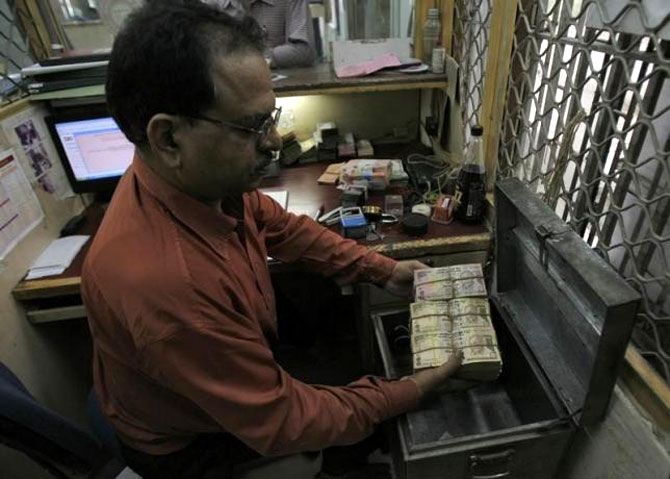
After opting for status quo in policy rates, Reserve Bank Governor Raghuram Rajan on Tuesday said any more cut will depend on further transmission of previous rate cuts by banks, softening in inflation and progress of monsoon.
"We are looking whether the recent increase in inflation is temporary and whether the monsoon will continue to be near normal. The oil price development is very beneficial and we will await greater transmission of our past actions by banks while we look and monitor developments for emerging room," Rajan said during the customary post-policy interaction with journalists.
In the policy statement, Rajan said the RBI continues to have an accommodative stance, which was adopted in January this year with a surprise rate cut.
Despite favourable base effect, headline inflation surged to nine-month high of 5.40 per cent in June which resulted in expectations, especially at individual level, getting elevated, RBI said.
"Inflationary expectations do get altered considerably by certain salient items such as food, milk and vegetables. Given that, yes, it (elevated expectations) is a concern but one should keep that in perspective," Rajan said.
Speaking on the occassion, RBI Deputy Governor Urijit Patel said, at the moment, the risks on inflation are balanced but exuded confidence that the central bank will be able to meet the January, 2016 target of 6 per cent with inflation coming below it.
However, the policy document pegged the January price index at 5.8 per cent, which is 20 basis points below the April and June estimate.
With wholesale price inflation continuing to tread in the negative zone for the eighth consecutive month, and calls for rate cuts thereof getting shriller, Rajan said the RBI prefers to formulate its policies based on CPI which gives a better picture of the pinch at the individual level.
"It's convenient to look at the whole price index, then you can do all your work on inflation management based on factors from outside on which we have no control.
"But if we really want to manage inflation, we have to look at the sum total of inflation, especially inflation that concerns consumers, which determines household savings, wage pressures," Rajan said.
On the issue of transmission, the Governor admitted that it takes anywhere between three to four quarters for RBI measures to resonate in real economy and expressed hope that the impact of 75 basis points rate cuts in three installments since January will start showing from September.
"We have to forecast what is going to happen in economy three-four quarters down the line to effectively gauge the impact of any rate action we are going to take... rate cut gives a signal, which is why the market gets optimistic or pessimistic," he said.
Investors take a call based on the signals and draw their plans accordingly, which take time to fructify, he added.
"What we should be looking for now are the effects of the rate cut that started in January, they should start coming as we go forward. What we really need to do is to bring inflation down.
"Both the producer as well as the consumer, saver as well as the investor, so that all of them can and should feel comfortable. That is what we are engaged in," said Rajan while sharing the intent of RBI actions.
When asked about the chances of a mid-policy action as he did in January and March, Rajan hinted that such a move is unlikely, but added that the central bank always has the right to move whenever it deems fit.
"Generally, at the early stages of the turnaround in monetary policy there is a need to do that (mid-policy cuts) more than at later stages," he said, adding "we have had rate actions during scheduled reviews like the one in June after the two cuts."
Even though the policy document flagged slowdown in exports and steady depreciation of the rupee as major concerns, Rajan said there is no level for the rupee which the RBI tracks and intervenes in the forex market only to reduce volatility.
Rajan, however, conceded that factors like competitiveness in the industry are looked into in the management of exchange rates.
On growth, where the central bank has maintained its April GDP estimate of 7.6 per cent for the current fiscal, deputy governor Urijit Patel said the RBI looks at other data-points, including the purchasing managers index, auto sales, freight traffic, factory output and credit growth while formulating the monetary policy.
When asked about the statutory liquidity ratio, Rajan said there is a full chance of it going down from the current 21 per cent as the RBI is all for having an open market for the government bonds rather than a captive one where banks are forced to invest as in the present case.
"The government bond market should find its place in an open market and in a captive market like in the present scenario," Rajan said.
To a question on naming the systematically important banks and other financial institutions, Deputy Governor R Gandhi said the central bank is working on the report on systemically important banks and will be coming out with the names before the end of the month as had been previously announced.
The RBI has received a report on the way ahead for functioning of urban cooperative banks and will be putting it up for public comments shortly, Rajan said.









